Keratinocyte growth factor (KGF) is required for postnatal thymic regeneration
- PMID: 16304055
- PMCID: PMC1895735
- DOI: 10.1182/blood-2005-07-2831
Keratinocyte growth factor (KGF) is required for postnatal thymic regeneration
Abstract
Keratinocyte growth factor (KGF) is a member of the fibroblast growth factor family that mediates epithelial cell proliferation and differentiation in a variety of tissues, including the thymus. We studied the role of KGF in T-cell development with KGF-/- mice and demonstrated that thymic cellularity and the distribution of thymocyte subsets among KGF-/-, wildtype (WT), and KGF+/- mice were similar. However, KGF-/- mice are more vulnerable to sublethal irradiation (450 cGy), and a significant decrease was found in thymic cellularity after irradiation. Defective thymopoiesis and peripheral T-cell reconstitution were found in KGF-/- recipients of syngeneic or allogeneic bone marrow transplant, but using KGF-/- mice as a donor did not affect T-cell development after transplantation. Despite causing an early developmental block in the thymus, administration of KGF to young and old mice enhanced thymopoiesis. Exogenous KGF also accelerated thymic recovery after irradiation, cyclophosphamide, and dexamethasone treatment. Finally, we found that administering KGF before bone marrow transplantation (BMT) resulted in enhanced thymopoiesis and peripheral T-cell numbers in middle-aged recipients of an allogeneic BM transplant. We conclude that KGF plays a critical role in postnatal thymic regeneration and may be useful in treating immune deficiency conditions.
Figures
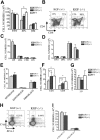
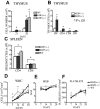
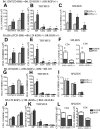
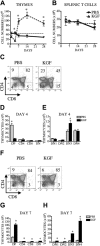

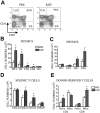
References
-
- Danilenko DM. Preclinical and early clinical development of keratinocyte growth factor, an epithelial-specific tissue growth factor. Toxicol Pathol. 1999;27: 64-71. - PubMed
-
- Danilenko DM, Ring BD, Trebasky BD, et al. Keratinocyte growth factor alters thymocyte development via stimulation of thymic epithelial cells [abstract]. FASEB J. 1996;10: A1148.
-
- Finch PW, Cunha GR, Rubin JS, Wong J, Ron D. Pattern of keratinocyte growth factor and keratinocyte growth factor receptor expression during mouse fetal development suggests a role in mediating morphogenetic mesenchymal-epithelial interactions. Dev Dyn. 1995;203: 223-240. - PubMed
-
- Finch PW, Rubin JS, Miki T, Ron D, Aaronson SA. Human KGF is FGF-related with properties of a paracrine effector of epithelial cell growth. Science. 1989;245: 752-755. - PubMed
Publication types
MeSH terms
Substances
Grants and funding
LinkOut - more resources
Full Text Sources
Molecular Biology Databases

